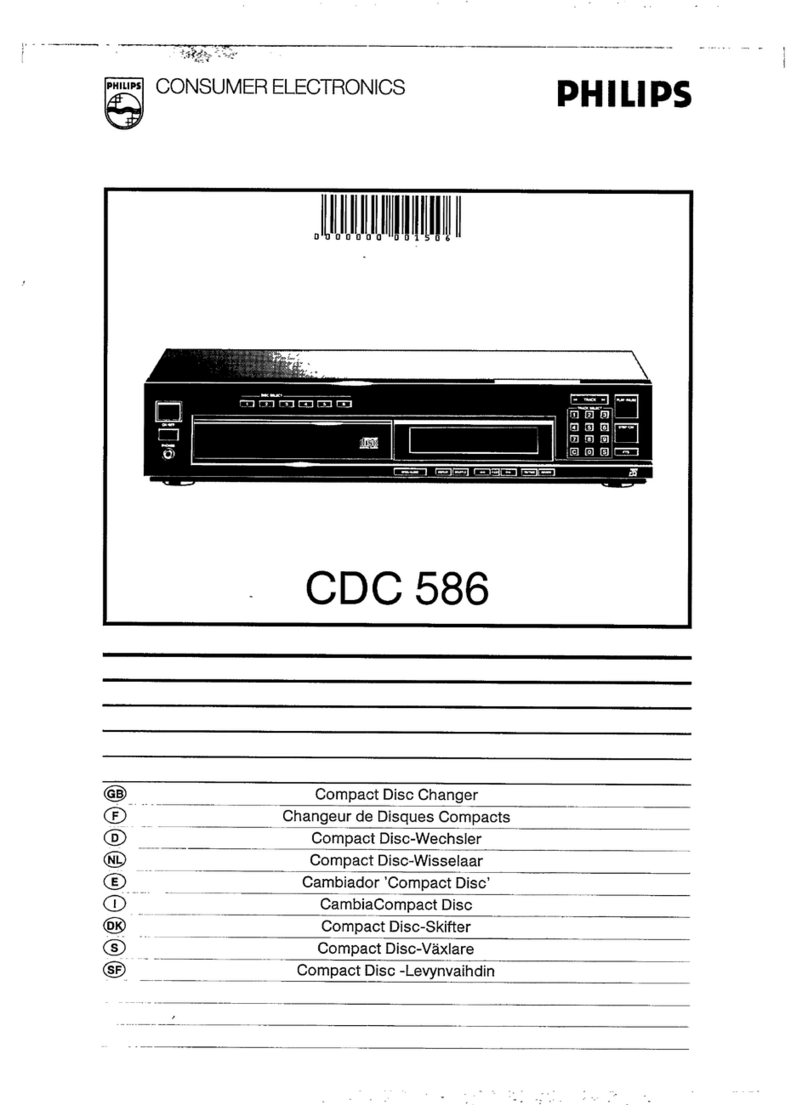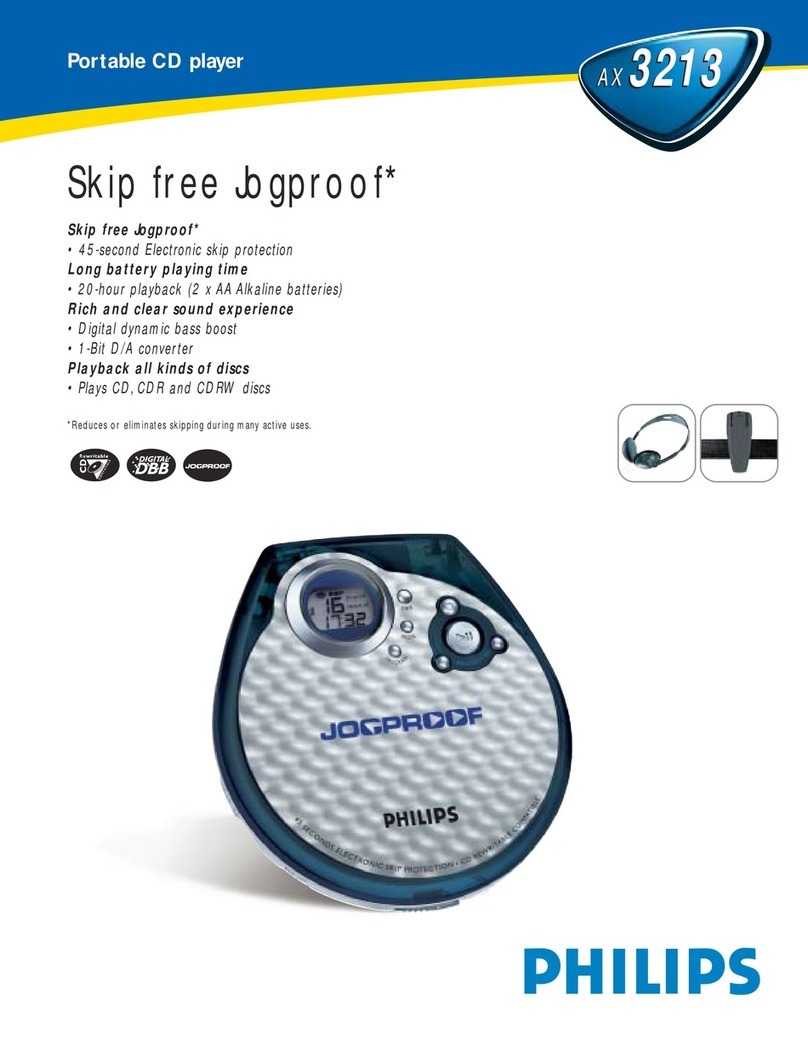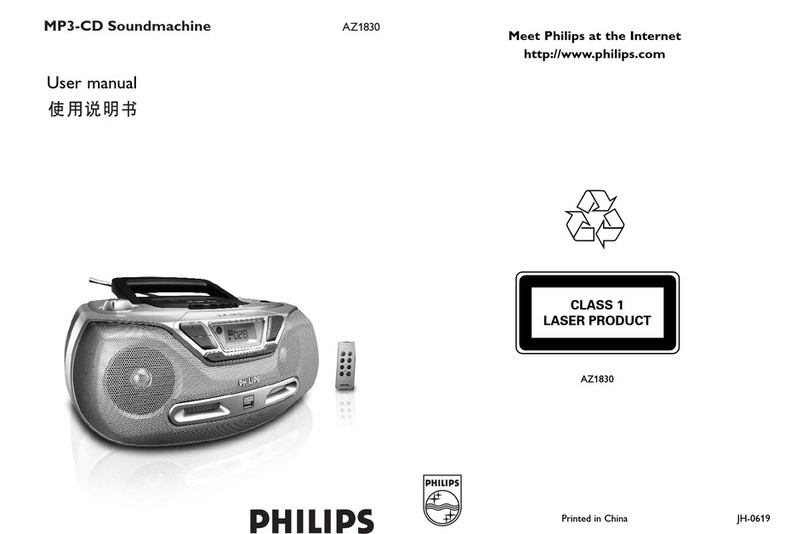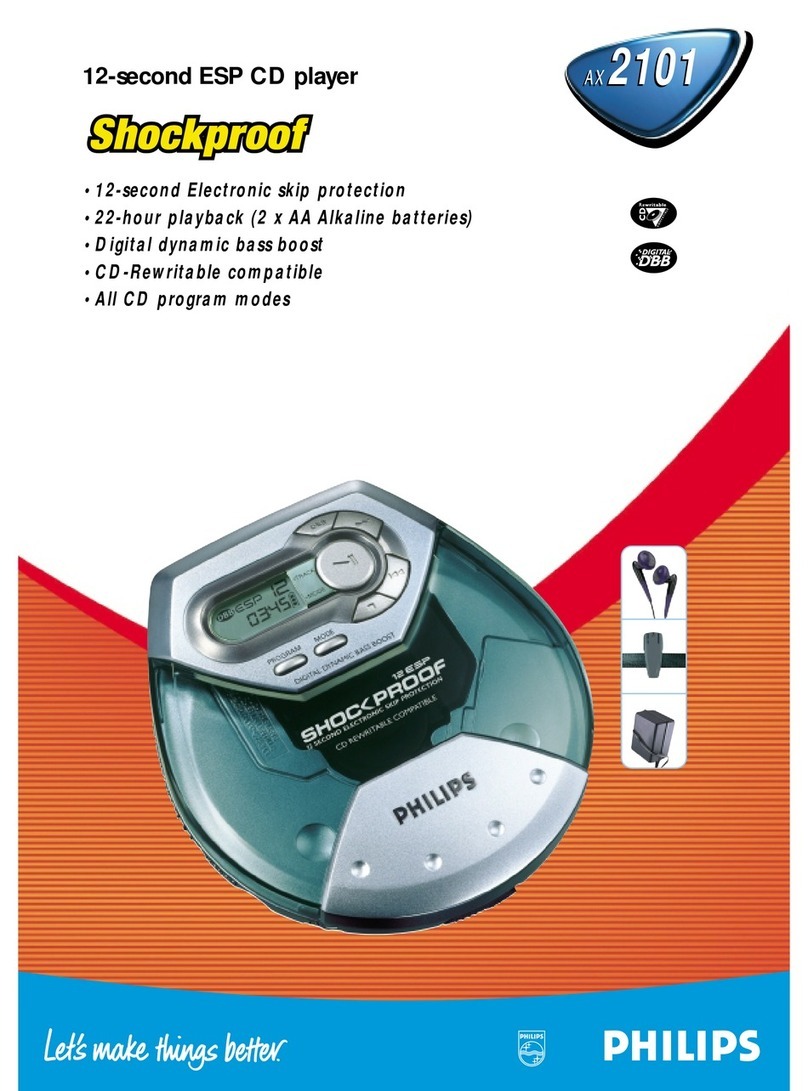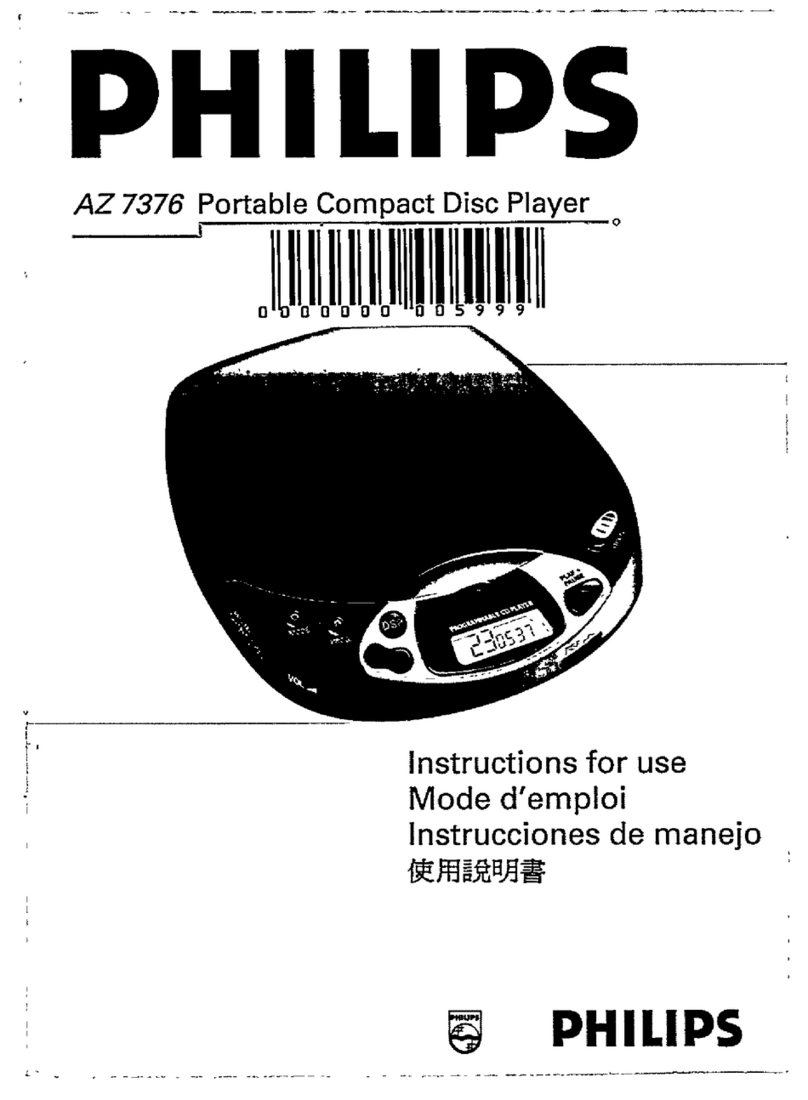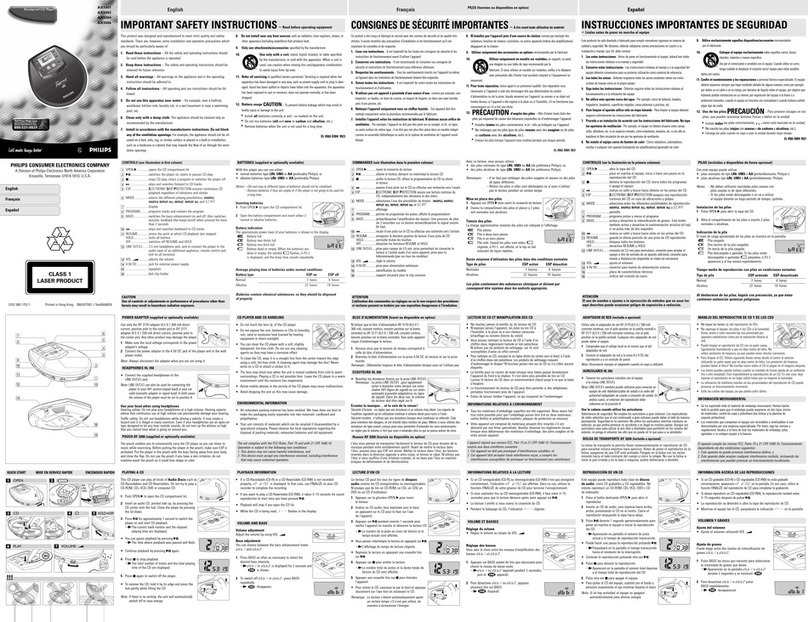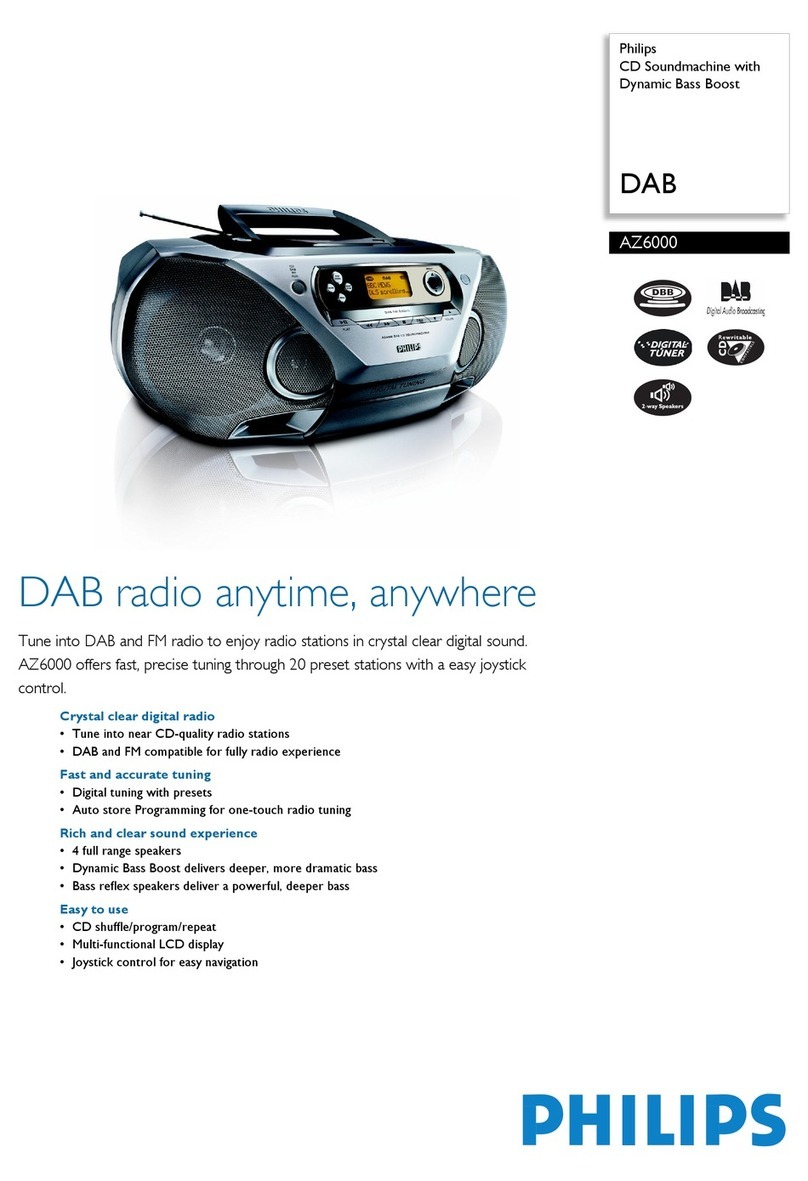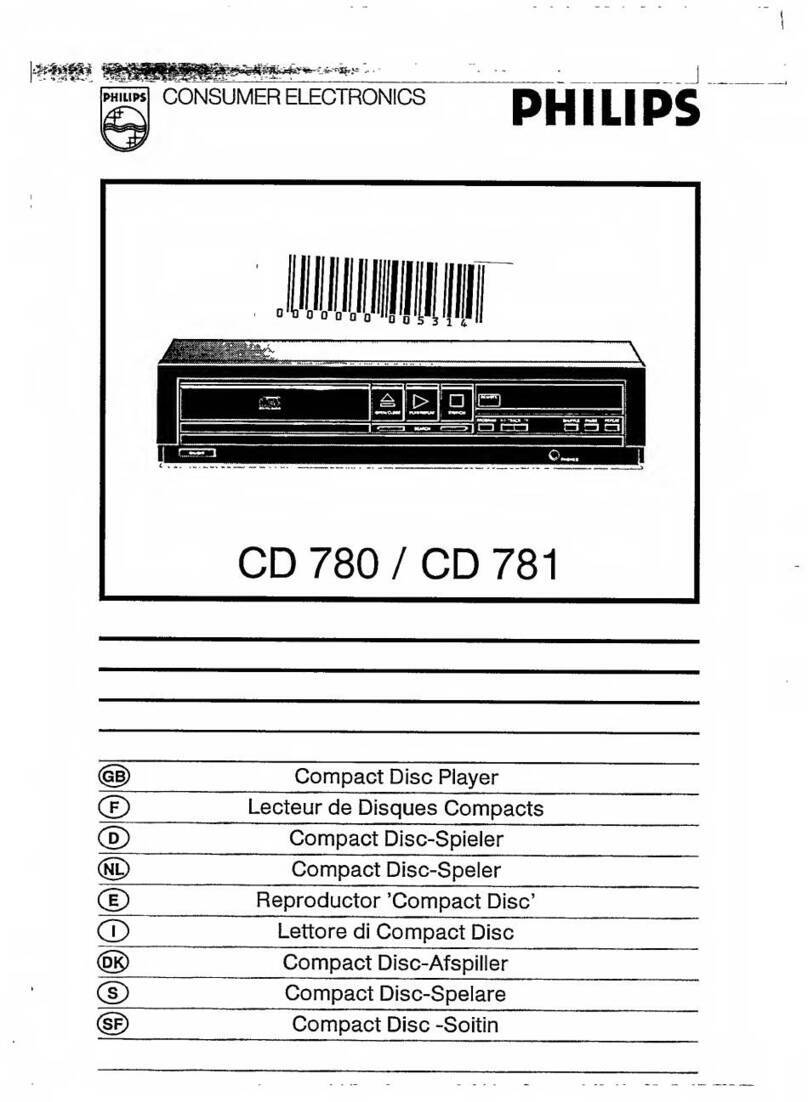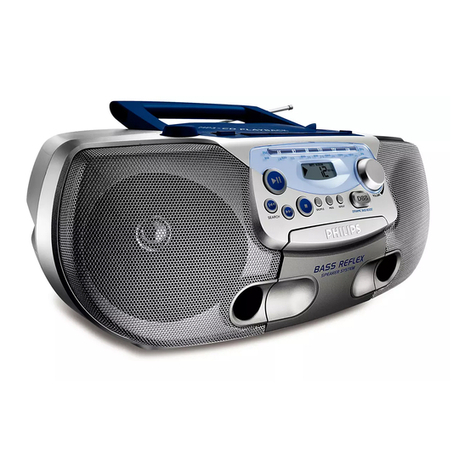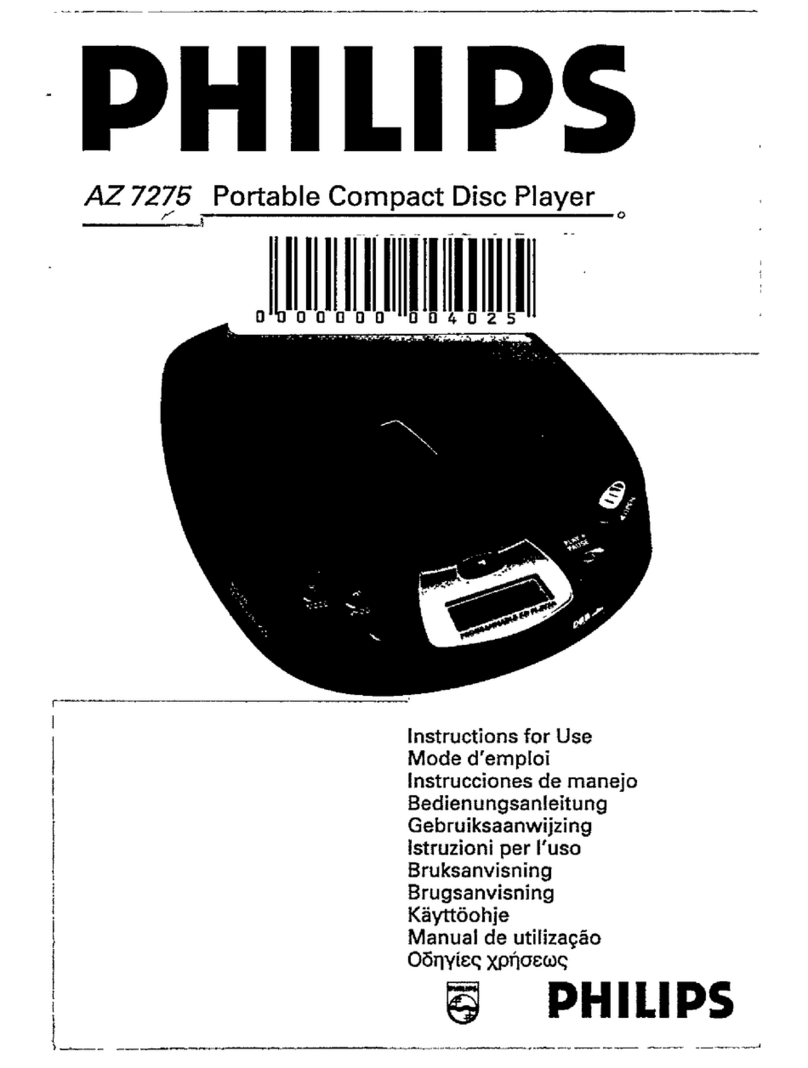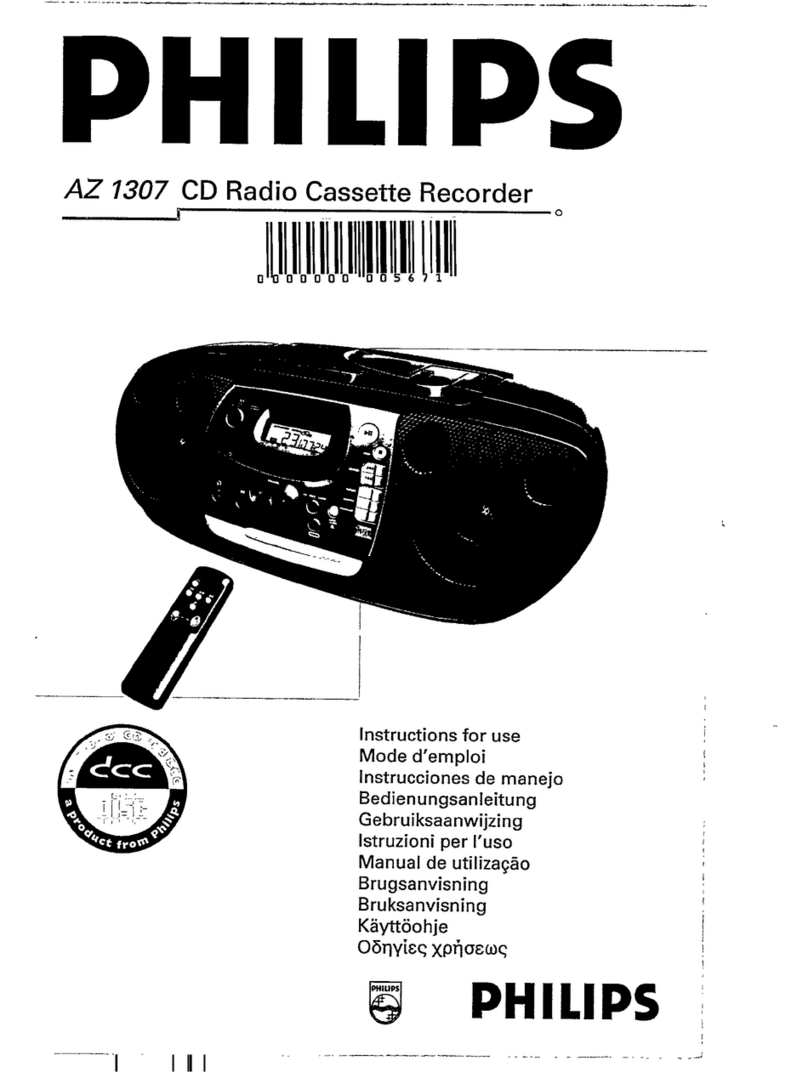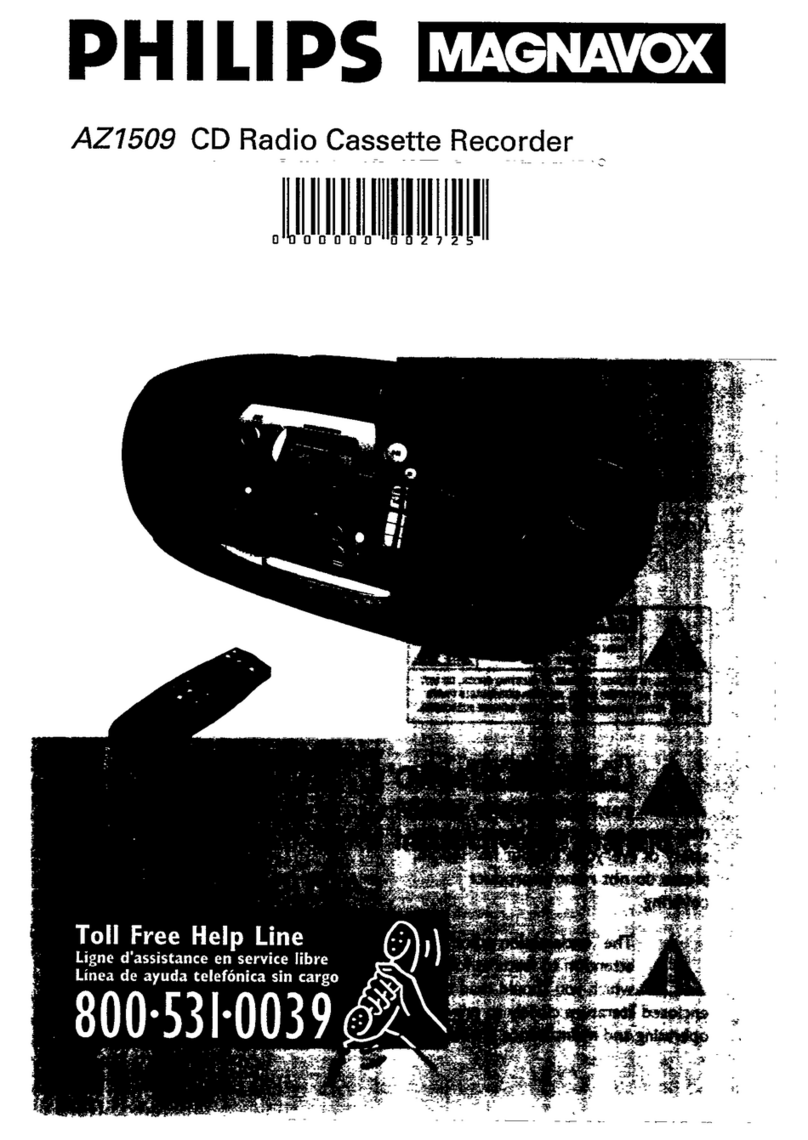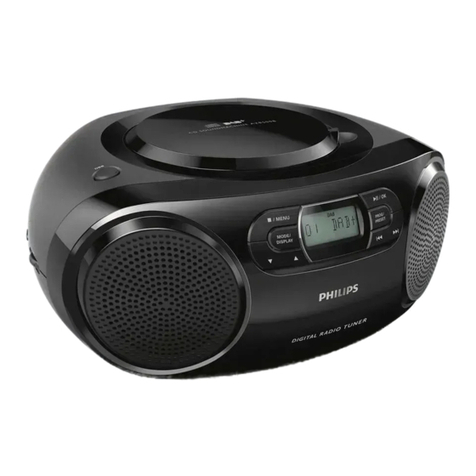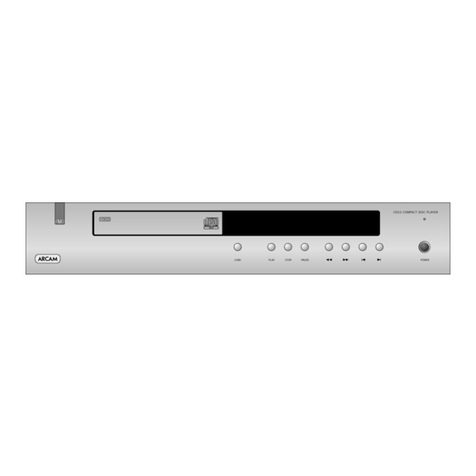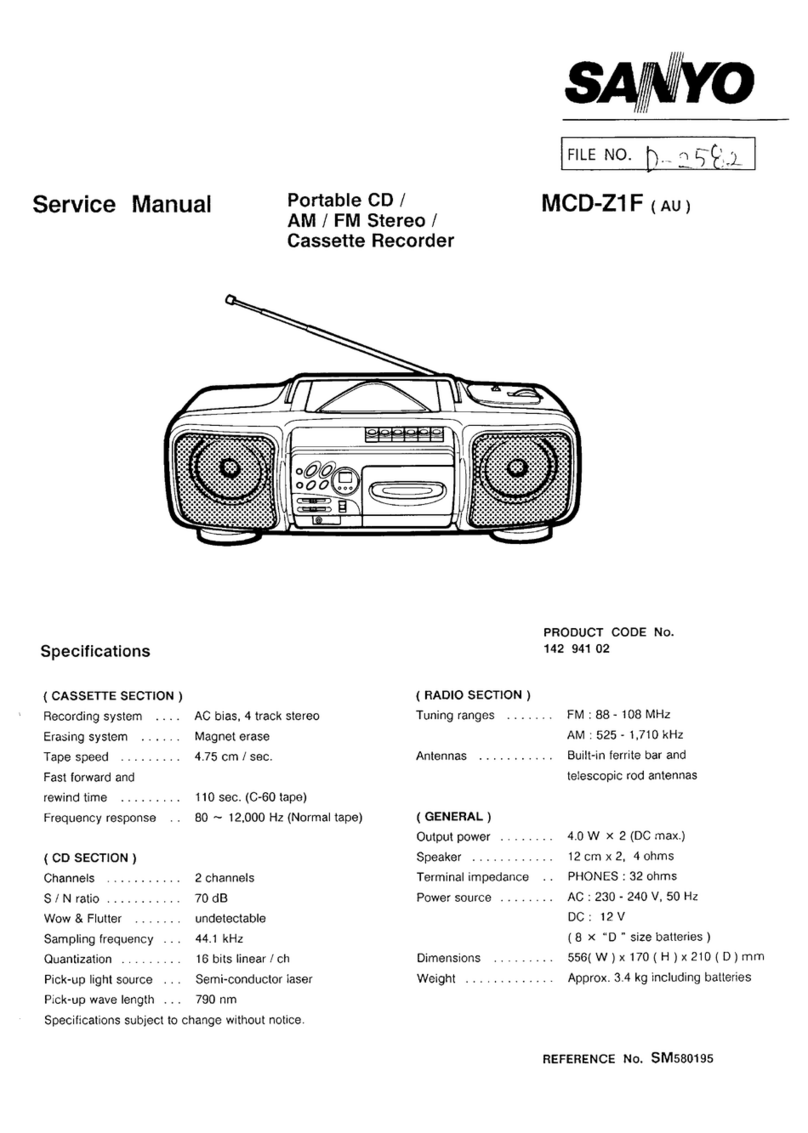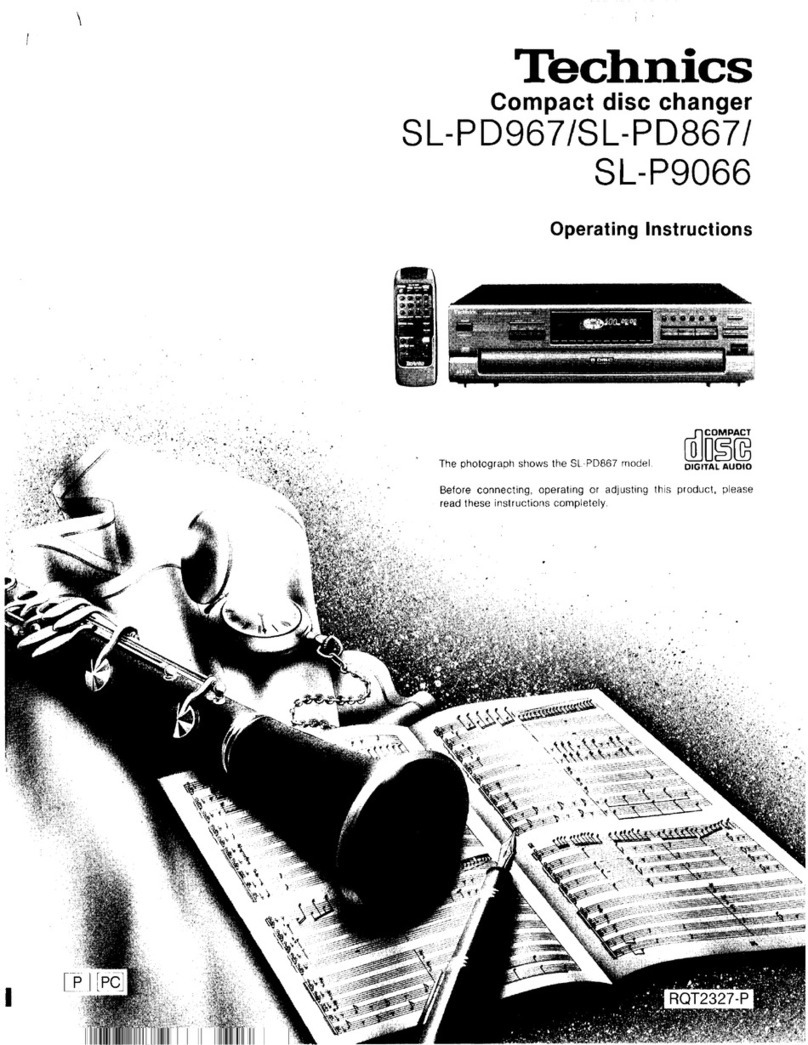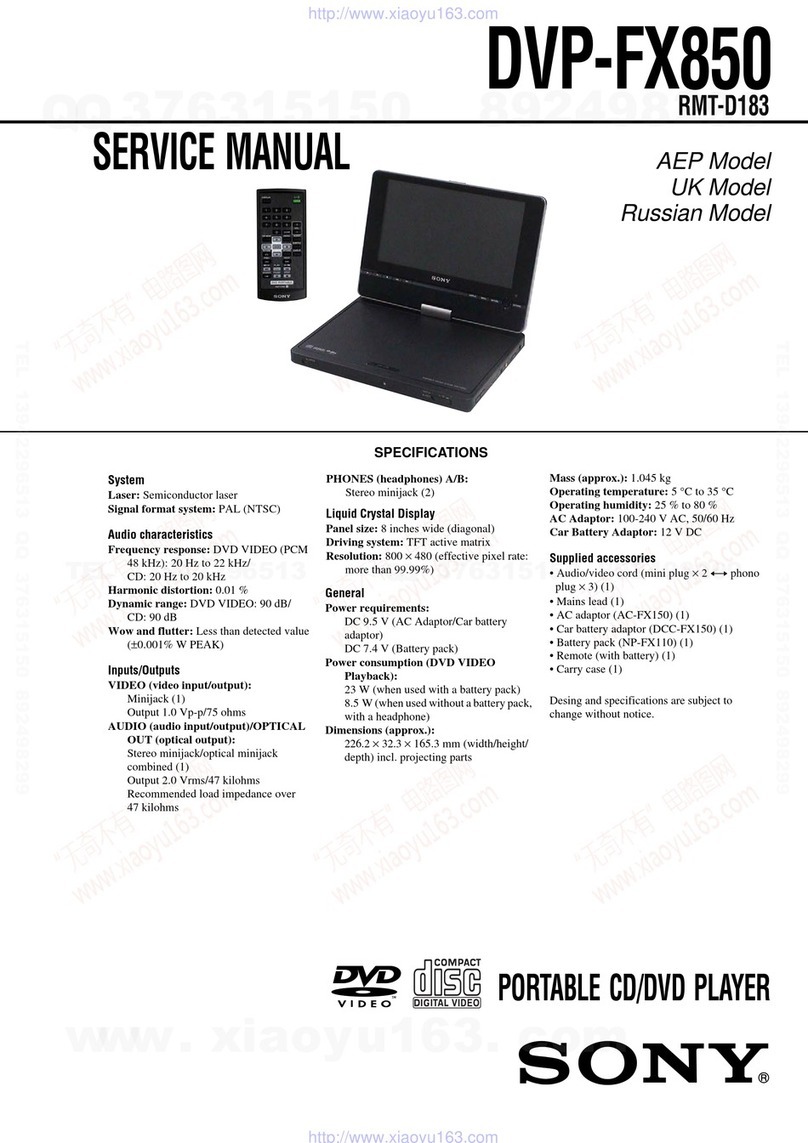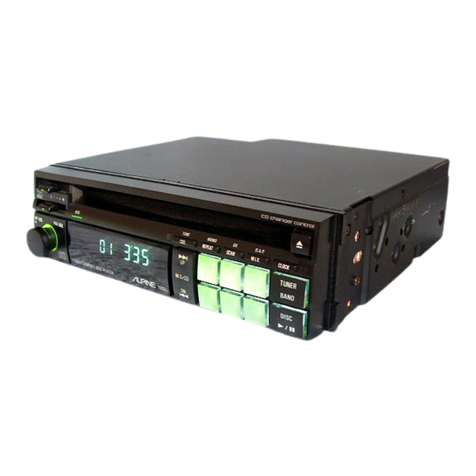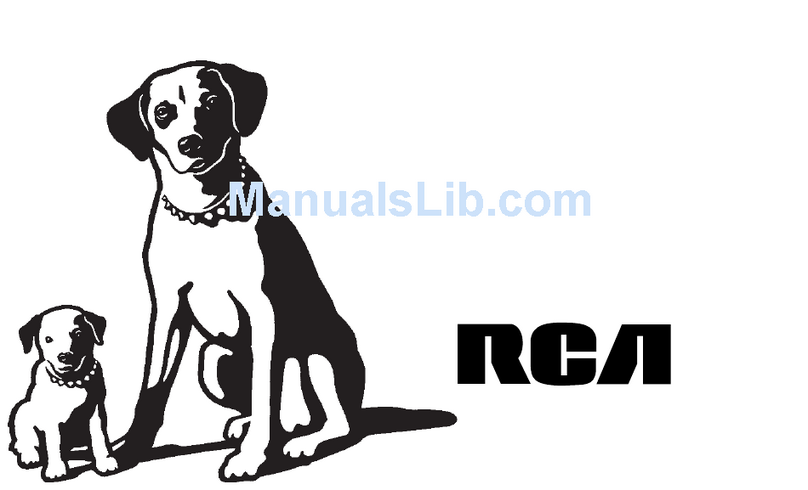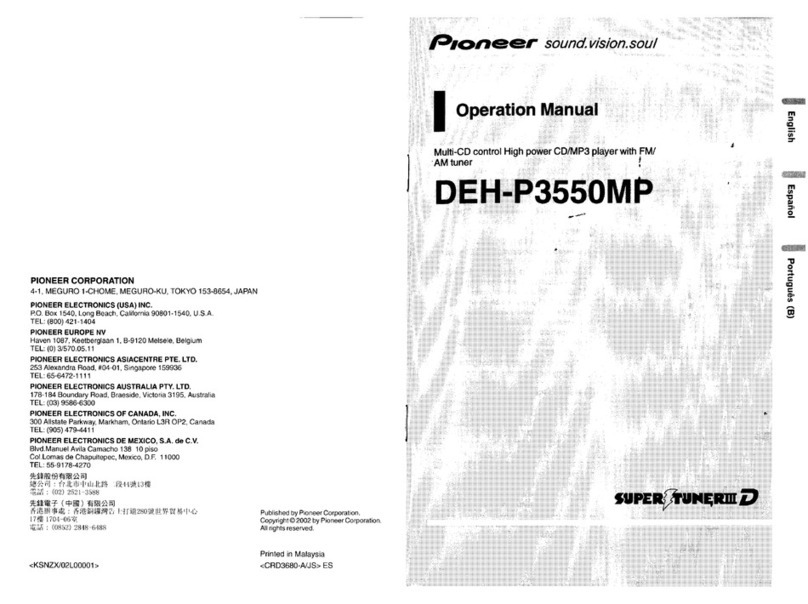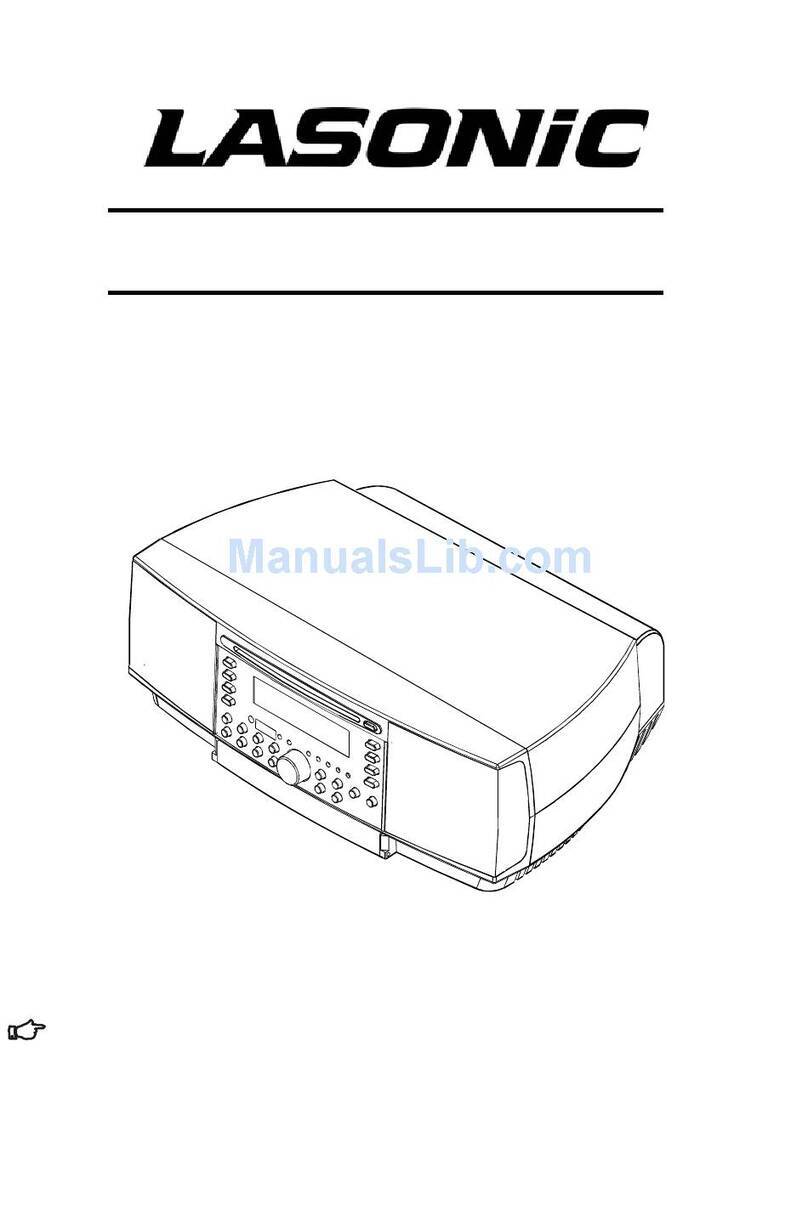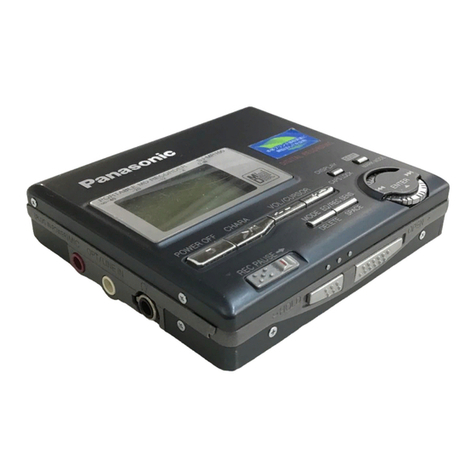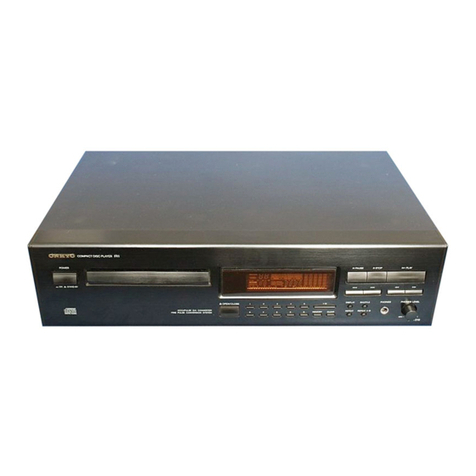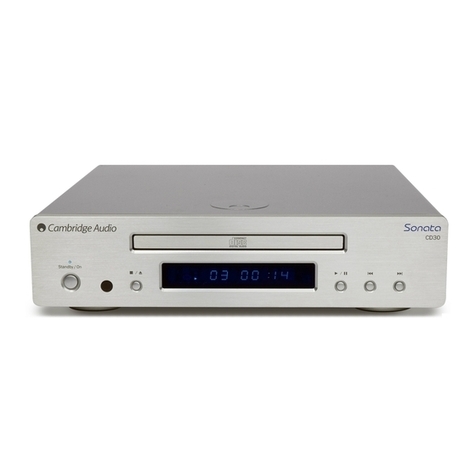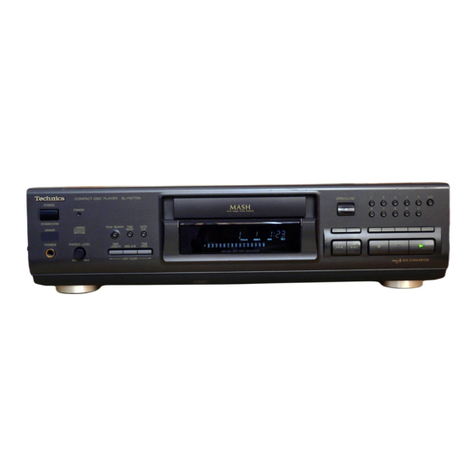Cassette playback
1Adjust
the Source selector
to
TAPE
.
2Press STOP•OPEN
9
/to open the cas-
sette holder and insert a cassette, and close
the deck.
3Press PLAY
1
to start playback..
4To pause playback, press PAUSE8.To
resume, press the key again.
5To stop the tape, press STOP•OPEN
9
/.
Fast forwarding/rewinding
1Press F.FWD/ REW 5 or 6until you
reach your desired passage.
2Press
9
/to stop rewinding/fast forwarding.
Helpful hints:
–During playback, the keys are automatically
released at the end of a tape and the set is
switched off (unless PAUSE8mode has been
activated.)
–During fast forwarding/rewinding, the keys will
not be released at the end of a tape.To switch
off the set, make sure the cassette keys are also
released.
General information on recording
•Recording is permissible insofar as copyright
or. other rights of third parties are not
infringed.
•For recording, use only NORMAL type cas-
settes (IEC type I) on which the tabs have
not yet been broken.This deck is not suited
for recording on CHROME (IEC II) or
METAL (IEC IV) type cassettes.
•The best recording level is set automatically.
Altering the VOLUME or DBB will not
affect the recording.
•To protect a tape from accidental erasure,
break out the tabs. If you wish to record again,
cover the tabs with a piece of adhesive tape.
CD synchro start recording
1Select CD source.
2Insert a CD, or if desired, program track
numbers.
3Press STOP•OPEN
9
/ to open the cas-
sette holder. Insert a blank tape and close
the deck.
4Press REC
0
to start recording.
•Playing of the disc/ programme starts auto-
matically from the beginning.You don’t need
to start the player separately.
5For brief interruptions press PAUSE8.To
resume recording, press PAUSE8again.
6To stop recording, press STOP•OPEN
9
/.
Recording from the Radio
1Select
TUNER
source.
2Tune to the desired radio station (see Radio
reception).
3Follows steps 3-6 under CD synchro start
recording.
Cassette Recorder
CD player and CD handling
•If the CD player cannot read CDs correctly,
use a cleaning CD to clean the lens before
taking the set to repair.
•The lens of the CD player should never be
touched!
•Sudden changes in the surrounding
temperature can cause condensation on the
lens of your CD player. Playing a CD is then
not possible. Do not attempt to clean the
lens but leave the set in a warm environment
until the moisture evaporates.
•Always close the CD-tape door to avoid dust
on the lens.
•To clean the CD, wipe in a straight line from
the center towards the edge using a soft,
lint-free cloth. Do not use cleaning agents as
they may damage the disc.
•Never write on a CD or attach any stickers
to it.
Ta pe deck maintenance
To ensure quality recording and playback of
the tape deck, clean parts A,Band Cas
shown, once a month. Use a cotton bud
slightly moistened with alcohol or a special
head cleaning fluid to clean the deck.
1Open the cassette holder by pressing
STOP•EJECT.
2Press PLAY and clean the roller C.
3Press PAUSE and clean the heads A,and
the capstan B.
4After cleaning, press STOP•EJECT.
➜Cleaning of the heads can also be done by
playing a cleaning cassette through once.
Safety information
•Place the set on a flat, hard and stable surface
so that the system does not tilt.
•Do not expose the set, batteries, CDs to
humidity, rain, sand or excessive heat caused
by heating equipment or direct sunlight.
•The apparatus shall not be exposed to drip-
ping or splashing.
•Adequate ventilation with a minimum gap of
15cm (6 inches) between the ventilation
holes and surrounding surfaces is necessary
to prevent heat build-up.
•Do not cover the ventilation openings with
items such as newspapers, table-cloths, cur-
tains, etc.
•No objects filled with liquids, such as vases,
shall be placed on the apparatus.
•No naked flame sources, such as lighted can-
dles, should be placed on the apparatus.
•The mechanical parts of the set contain
self-lubricating bearings and must not be oiled
or lubricated.
•To clean the set, use a dry cloth. Do not use
any cleaning agents containing alcohol,
ammonia, benzene or abrasives as these may
harm the housing.
Maintenance & safety (See 8)
The making of unauthorized copies of
copy-protected material, including com-
puter programmes, files, broadcasts and
sound recordings, may be an infringement
of copyrights and constitute a criminal
offence.This equipment should not be
used for such purposes.
